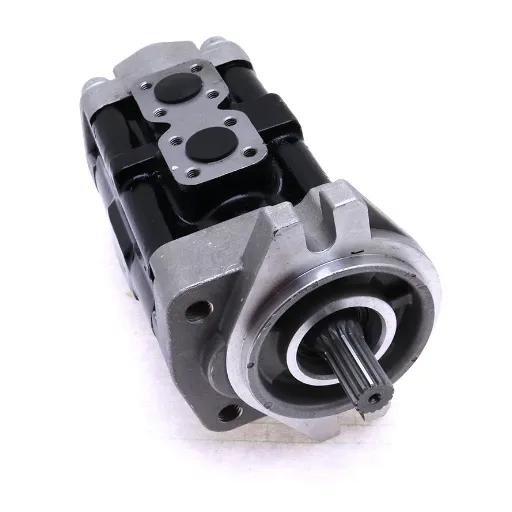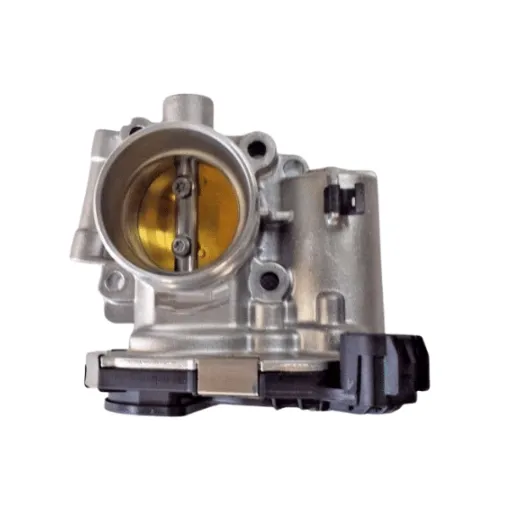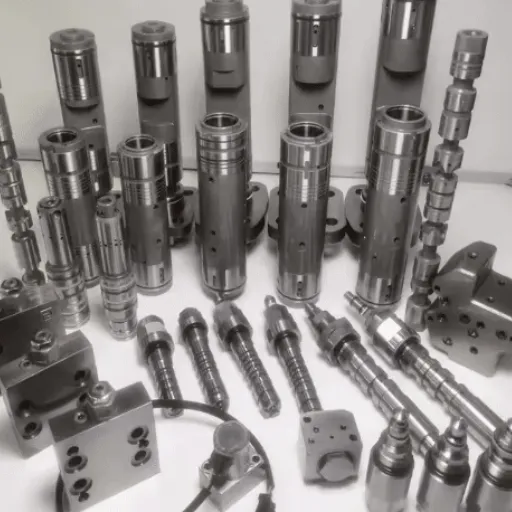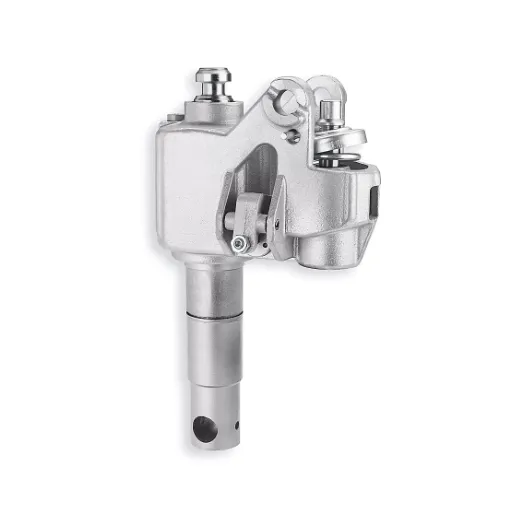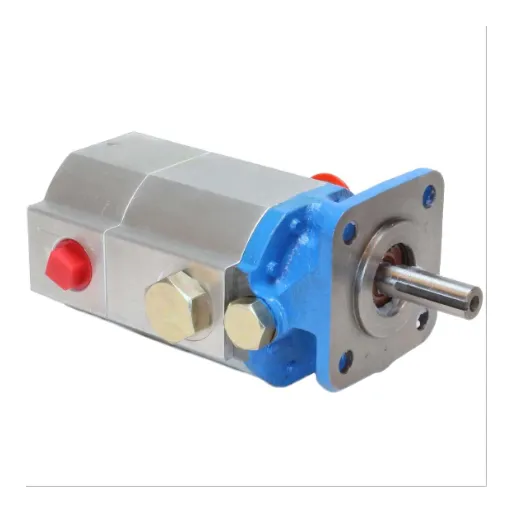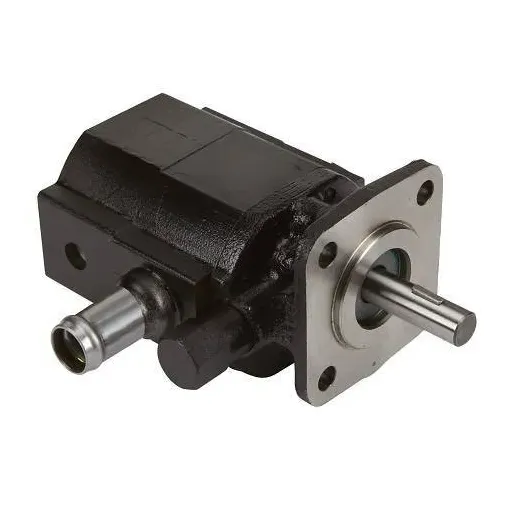Pressure relief systems play a critical role in ensuring the safety and efficiency of industrial operations, particularly in environments where equipment is exposed to high-pressure conditions. Among the various components of these systems, pilot-operated relief valves stand out as an advanced and highly reliable solution for managing pressure fluctuations. But how do these valves work, and what makes them different from traditional relief valves? This article dives into the essential principles, applications, and advantages of pilot-operated relief valves, providing you with a comprehensive understanding of their functionality and importance. Whether you’re an engineer, safety manager, or simply curious about industrial systems, this guide will equip you with the knowledge needed to appreciate the sophistication of this key pressure control technology.
Introduction to Relief Valves

What are Relief Valves?
Relief valves stand as a mechanical apparatus that operates to give protection against the so-called overpressure in pressurized systems by allowing the escape of either excess fluid or gas therefrom, subject to the internal pressure exceeding a predetermined limit. Thus, given that an excess pressure may cause the device to be damaged, the system to fail, or in some dreadful occasion, to end, these devices become paramount in saving the installations from any kind of hazard.
A relief valve can serve as a pressure ensemble acting as an emergency measure. When the system pressure exceeds the preset pressure of the relief valve, the valve opens so the excess pressure can be discharged or released elsewhere. Recovery of the pressure to a suitably low value will cause the valve to close automatically, thus preventing further loss and ensuring uninterrupted working conditions for the system. Thus, the quick response of the relief valve greatly aids in creating uniform, safe working conditions in numerous industrial applications.
The relief valves find extensive application in chemical processing, oil and gas, power generation, and manufacturing industries. Different types of relief valves are designed for working conditions and kinds of media like liquids, gases, and steam, and are subject to safety standards and regulations. Relief valves can thus prevent damage due to sudden overpressure conditions, becoming a really vital piece toward system reliability.
Importance of Safety Relief in Industrial Systems
Safety relief systems would be critical to the safe and efficient functioning of industrial processes. The standard ones would act under conditions of overpressure, which might result in catastrophic failure, environmental hazards, or threats to human safety. An overpressure situation could be invoked by equipment malfunction or process upset, or external factors blocking discharge paths. These safety relief valves were the last line of defense in that they would automatically relieve pressure if the system pressure exceeded the set thresholds, thus preventing further destructive damage to operational integrity.
Industrial plants undergo stringent safety regulations, necessitating the accurate pressure control within pipelines, storage tanks, and process vessels. Lack of installation or non-maintenance of required safety relief systems leads to great losses in terms of money, lawsuits, and reputational damage.
The ability of safety relief systems to balance process optimization with safety so that plants may be operated close to maximum efficiency without the risk of unsafe pressure levels is crucial in industries where safety and performance are weighed seriously: oil, gas, chemical processing, and power-generating sectors. Continuous periodic inspection and maintenance of the relief valves are vital to ensure their failure due to wear, corrosion, and sometimes due to improper installation. Thus, safety relief systems are not solely an item in the regulation but also an operational requirement to protect industrial systems, people, and the environment.
Types of Relief Valves
Generally, relief valves can be segregated into three main categories, with each being suited to specific operational needs on industrial systems: spring-loaded relief valves, pilot-operated relief valves, and safety relief valves.
- Spring-Loaded Relief Valves: These valves use a spring mechanism for the closure of the valve disc. When the pressure in the system exceeds the set pressure, fluid pressure against the disc will overcome the force of the spring pushing the valve open to discharge the excess pressure; upon the lowering of pressure back to a safe level, the spring pushes the disc back to position to reseal the valve. Because of the simplicity and reliability of the design and versatility of application in various conditions, this type is the most widely used.
- Pilot-Operated Relief Valves: The main valves in pilot-operated relief valves open and close under the control of a pilot system. Pilot-operated relief valves find use for high-pressure or large-flow applications due to the capability of sealing tightly at normal pressure, therefore, reducing leakage and increasing efficiency. Precise adjustment of the relief process is, however, an advantage that arises from the pilot system, making these types of valves useful in applications where exact requirements need to be met with leveling performance.
- Safety Relief Valves: Safety relief valves can affordably act either as a safety valve that opens fully for pressure release or as a traditional relief valve that modulates the pressure release in proportion to the degree of overpressure. They are specially designed for systems where a catastrophic failure must be avoided, such as boilers or chemical reactors. This type combines the features of safety and standard relief valves to ensure robust performance in highly dynamic working environments.
In a nutshell, each relief valve has a specific use, so the proper choice depends upon system requirements, operations, and safety standards.
What is a Pilot Operated Relief Valve?

Definition and Functionality
The Pilot Operated Relief Valve (PORV) signifies a well-engineered and advanced pressure relief device carefully designed to limit and release excess pressure in complex systems with precise control and utmost reliability. Unlike the normal spring-loaded relief valve, the PORV utilizes an auxiliary pressure pilot to control the opening and closing of the main valve. The pilot system is sensitive to slight changes in system pressure so that the valve can react quickly when pressure thresholds are set.
Historically, the functioning of a PORV has been described in terms of force balances. The pilot sees system pressure and determines whether that pressure has crossed the set value. Upon reaching the set value, pressure is redirected away from the main valve actuator, and the valve opens so pressure is relieved into a safe discharge area. After the pressure has dropped to an acceptable level, the pilot resets itself so that the main valve reseats securely. This design permits precise pressure control, less leakage, and reduced wear under either high or variable pressure conditions, making PORVs necessary in oil and gas processing, power generation, and cryogenic systems.
Recent advances in PORV technology include diagnostic setups, remote monitoring functionalities, and enhanced sealing mechanisms. Such features make the system safer, incur less downtime, and even help the system in complying with stringent industrial standards. Robust construction plus accurate functionality is why stack-ofing constitutes a critical element of pressure management approaches in present-day industrial systems.
How Pilot Operated Valves Differ from Other Types
Pilot Operated Relief Valves (PORVs) list important characteristics that mark their distinction from either direct-acting or spring-loaded valves and allow them to be preferred in certain industrial scenarios. The spring-loaded valve aims to set and hold equilibrium using only the force of the spring and will open under pressure changes. The PORV, on the other hand, uses an auxiliary or a pilot valve with which to control the actual opening and closing mechanism of the main valve. It has an advantage in precision and fine control as set pressures can be held closer without premature release or simmer.
Furthermore, the PORVs have a broader array of set pressures and flow capacities. The pilot helps reduce the effect of backpressure-disadvantages incurred by many types of spring-operated valves—and ensures consistency in repeatable performance under ever-changing conditions. In contrast to direct-acting valves that are generally less complicated and cheaper to manufacture for smaller pressure systems, PORVs offer some good benefits, such as modulated flow control and greater stability when working under high pressure or high temperature.
Because of these differences in design and operation, PORVs are best suited for applications involving fine pressure control, high set pressure ranges, and frequent cycling. Industries like petrochemical processing, power generation, and high-pressure manufacturing prefer these valves because they promise better efficiency and longevity while meeting super stringent safety codes.
Components of Pilot-Operated Safety Relief Valves
Pilot-operated safety relief valves consist of various essential components specifically designed for precision, reliability, and operational safety in high-pressure systems. The major components are listed below:
- Main Valve Assembly: The main valve is the heart of the PORV; it consists of a valve body, seat, and disc. This assembly controls the flow of the pressurized fluid according to the commands received from the pilot system.
- Pilot Valve: The pilot valve is the most important element in controlling the main valve. It senses system pressure and decides whether or not the main valve has to open. The pilot valve guarantees highly accurate pressure modulation.
- Sensing Line: It forms a link between the system being protected and the pilot valve. This component transmits the true system pressure to the pilot valve, therefore allowing the pilot valve to monitor and respond instantaneously.
- Actuator Mechanism: Typically relying on pressurized fluid itself, the actuator is supposed to open the main valve whenever commanded by a pilot valve. It is designed to respond at the blink of an eye to changing pressure conditions.
- Spring or Dome Chamber: It exerts a force counter to that of the system pressure, providing a quick means of adjusting the preset pressure required for opening or closing. The chamber can be adjusted for a particular setting.
- Discharge Port: When the valve opens to relieve excess pressure, the discharge port directs fluid or gas being ejected away in a manner that causes minimal disruption to the operations of the system.
The working of all these parts remains well-coordinated to provide the best possible functionality, safeguarding the system and applying safety and industry standards. The combination of mechanical accuracy and automated control makes PORVs invaluable for the competent handling of overpressure situations.
Applications of Pilot Operated Relief Valves
Industries Utilizing Pilot Operated Valves
Due to high reliability, precision, and ability to withstand high pressure, Pilot Operated Relief Valves (PORVs) have applications in different industries. Therefore, the oil and gas industry uses this technology extensively, also known as protection of critical infrastructure like pipelines, refineries, and offshore platforms from overpressure conditions. In this life-endangering environment, these valves contribute critically to safety and regulatory compliance.
Then come the chemical and petrochemical industries that depend heavily on PORVs to keep safe their processes with dangerous substances. The controlled and reactive characteristics make these valves ideal in situations where small pressure variations must be met; thus, they maintain plants.
In power generation, including conventional, nuclear, and renewable systems, industries outside the energy focus employ PORV. They are crucial for maintaining the operational integrity of turbines, boilers, and auxiliary machinery by averting catastrophic overpressure incidents.
They hold further great usage in water treatment, marine, and aerospace engineering. This wide array of applications attests to the versatility of PORVs in catering to differential industrial requirements. Therefore, the use of PORVs ensures that robust system performance is achieved while residing within the path of very strict international quality and safety standards.
Role in Process Control Systems
Pressure-operated relief valves (PORVs) constitute one of the primary means by which process control systems preserve operational integrity and safety in industrial settings. The precise regulation of system pressure levels by these valves enhances efficient operation, operational reliability, and the elimination of incidents of equipment failure or unplanned downtimes. Some of the PORV services critical to process control settings are:
- Pressure Regulation: PORVs constantly monitor and regulate the pressure within the system to uphold pre-set safety limits. They avoid causing damage to equipment and allow uninterrupted operation.
- System Protection: Through automatic pressure relief, PORVs afford protection to important equipment, such as reactors, pipelines, and storage tanks, from overpressure failure, especially where volatile substances are concerned.
- Energy Efficiency: Integration of PORVs minimizes energy losses by keeping the system in equilibrium and preventing unnecessary loading or cycling of equipment like compressors and pumps.
- Fail-Safe Operations: PORVs are basically intended to act as a fail-safe if the control system should malfunction, thereby providing an essential safety layer for any automated or semi-automated system.
- Compliance with Standards: These valves enhance compliance with standards set forth by industry and regulatory bodies, such as API 526 and ASME Section VIII, ensuring the system satisfies rigorous safety and operational requirements.
The placement of PORVs within process control systems is an illustration of their paramount role in increasing safety margins, ensuring adherence to regulations, and enabling stable, efficient, and dependable system operation.
Advantages of Using Pilot Operated Relief Valves

Precision in Pressure Control
Pilot-operated relief Valves are designed to give thorough precision pressure control in complicated processes. Unlike simple relief devices that cannot control pressure formation, PORVs utilize a pilot device that maintains slight variations from the pressure setpoint to minimize overpressure situations. The control is realized by dynamically responding to the actual state of the system, which reduces operational degradation caused by needless cycles.
With the tightening of pressure control, one can gain improved operation efficiency and system integrity through PORVs. The modulating action of a PORV means that it is only opened as much as necessary to relieve excess pressure, with the finer details in optimizing the operating conditions and conserving system resources left to the system itself. This is crucial in areas like chemical processing, power generation, and oil and gas, as even minor pressure fluctuations can result in costly downtimes or safety concerns.
The latest developments with sensors and electronic monitoring have improved the accuracy of PORVs to allow operators to perform predictive maintenance and real-time diagnostics on their systems to optimize performance and solve problems before they even appear. Combining its ruggedness with the latest technology, a PORV is one of the major tools towards keeping industrial operations safe, efficient, and compliant.
Improved System Efficiency
Technological advancements in PORVs have thus improved the overall functioning by providing precision control, thereby reducing energy loss. Nowadays, intelligent sensors and automation systems monitor pressure levels and environmental conditions in real-time to activate the mechanism when it is really needed, thus avoiding unnecessary energy consumption and component wear.
Analytical platforms have been provided to analyze the data gathered in real-time by the PORV systems, thus giving operators a better grasp of how the system is operating. Such platforms enable predictive maintenance and allow instantaneous identification of any divergence from optimum operating conditions. Field experiences have shown that they can reduce downtime by 25% and increase the overall efficiency of fluid control systems by 15%.
With all these developments, efforts toward preventive maintenance ensure industries operate sustainably and keep handling severe regulatory and safety requirements. These innovations make modern PORV an eternal requirement for the realization of operational and environmental goals within any industrial process.
Reduced Leakage Risks
From my point of view, the reduction of leakage risk in Pressure Operated Relief Valves (PORVs) has been one of the major achievements in their development for industrial systems. Leakage leads to material loss and inefficiencies. Leakage further leads to serious safety and environmental hazards. Hence, installation of modern PORVs with advanced sealing mechanisms and real-time monitoring features greatly reduces leakage potential; these enhancements also promote system integrity and remain compliant with strict environmental laws.
I’d say that such advancements owe their existence to a fusion of innovative materials and precision engineering. As an example, seals made of high-performance polymers exhibit the most varied wear resistance and chemical resistance, and the very moment the chemical disintegration is taking place, the operational integrity of the seal stands mostly unaffected through rough weather. Simultaneously, intelligent monitoring systems can detect wear or abnormalities in the valve components, thus preventing them from leaking before they become a bigger problem.
Consequently, by harnessing these technological advancements, the industries can substantially reduce the leakage risks and optimize their overall operational strategy. It is through the scrutiny of the system’s vulnerabilities and implementation of the latest solutions that safety can be improved while resources are sustainably utilized. Reduction in leakage risk has thereby assisted in saving money on the environment and operations as well.
Common Challenges and Solutions

Selecting the Right Pilot Operated Valve
Requirements such as pressure rating, compatibility with the fluid, operating temperature ranges, and flow capacity are significant for the application of the pilot-operated valve. The valve has to be either able or capable of meeting the specific requirements required of it by a given application, without compromising on efficiency or safety.
Pressure must not exceed the operating range of valves, as this would be detrimental to a mechanical unit. Otherwise, compatibility of the material should be there in order to resist the particular fluid being transported. For instance, stainless steel may resist corrosion caused by chemicals, whereas brass resists corrosion from more benign media. Temperature limitations need to conform to how hot or cold the system may be, such that the material does not deform or begin to leak.
Fast response and precise control have been of paramount importance for systems that require very fast actions. Modern pilot-operated valves employ a number of methods to provide accuracy in demanding applications, including proportional control and feedback. Other considerations while choosing would be valves that are self-cleaning or low-maintenance, valves designed for modular installation, and valves that comply with international standards to enhance reliability and service life.
Keeping these technical specifications firmly in mind, engineers would be able to consider a particular pilot-operated valve as an integral part of their system, optimize its operation, and reduce the possibility of malfunction in a varying environment.
Maintenance Tips for Optimal Performance
The pilot-operated valve requires the implementation of a formal maintenance programme to maintain peak operational efficiency. This schedule shall first provide opportunities for an inspector to identify any signs of wear, corrosion, or contamination that could adversely affect the functioning of the valve. Such cleaning would normally be done with an approved chemical or mechanical method to prevent the build-up of debris that could impair flow or even harm the internal surfaces of the valve. Also, it is important to ensure the integrity of seals such as O-rings and gaskets because a degraded seal can cause leakage or pressure drops.
To minimize friction and extend the life of the components, lubrication of moving parts, when applicable, should be carried out with manufacturer-recommended lubricants. Recalibration of the actuator mechanism is often needed to accurately control pressure, mainly when the system undergoes great pressure fluctuations. It is also prudent to monitor the condition of aging components and replace them as needed with respect to their recommended service life from the manufacturer in order to avoid the possibility of sudden failures.
A more technically refined alternative is also available in terms of integrating valve monitoring sensors that provide real-time data about flow rate, pressure, temperature, and other performance metrics. Detecting abnormalities at an early stage would allow operators to practice predictive maintenance instead of repair work. Adherence to these procedures offers an effective way for systems to become reliable and extend the life of the equipment, and enhance system efficiency.
Frequently Asked Questions (FAQ)
Q: What is a pilot-operated relief valve?
A: A pilot-operated relief valve is a type of pressure relief valve that uses a smaller pilot valve to control the operation of a larger main valve. This design allows for precise regulation of pressure within hydraulic systems and is often used in high-pressure applications such as power plants and processing plants.
Q: How do pilot-operated safety valves differ from traditional pressure relief valves?
A: Unlike traditional spring-loaded safety valves, pilot-operated safety valves utilize a pilot valve to manage the main valve’s opening and closing. This provides superior control over pressure differential and allows for higher flow rates, making them ideal for applications requiring significant overpressure protection.
Q: What are the main components of a pilot-operated relief valve?
A: The main components include the pilot valve, which opens to allow flow from the inlet to the vent when the inlet pressure exceeds the set point, and the main valve dome, which contains the piston that opens the valve. Additionally, there are springs to help reset the valve after operation.
Q: What is the blowdown in the context of pilot-operated relief valves?
A: Blowdown refers to the difference in pressure between the set pressure at which the pilot valve opens and the pressure at which it closes. This characteristic is crucial for maintaining system stability, as it prevents the valve from cycling on and off during minor pressure fluctuations.
Q: How important is the size of the valve when selecting a pilot-operated relief valve?
A: The size of the valve is critical as it directly affects the flow capacity and the ability to handle the required operating pressure. A properly sized valve ensures efficient operation and protects the system from overpressure conditions.
Q: What are the maintenance requirements for pilot-operated relief valves?
A: Regular installation and maintenance are essential for pilot-operated relief valves to ensure their functionality. Periodic maintenance, including inspection of seat tightness and pilot pressure, helps prevent leaks and ensures the valves operate correctly under varying pressures.
Q: Can pilot-operated pressure relief valves be used in hydraulic systems?
A: Yes, pilot-operated pressure relief valves are commonly used in hydraulic systems due to their ability to provide precise control over pressure levels. They can handle significant pressure differentials, making them suitable for various applications, including industrial and commercial systems.
Q: What types of pressure relief systems utilize pilot-operated relief valves?
A: Various types of pressure relief systems utilize pilot-operated relief valves, including those in processing plants, power plants, and other high-pressure applications. These valves play a crucial role in protecting equipment by relieving excess pressure effectively.
Q: How do I know when my pilot-operated relief valve needs maintenance?
A: Signs that your pilot-operated relief valve may need maintenance include visible leaks, abnormal noise during operation, and failure to open or close at the designated pressure. Regular inspection and monitoring of valve performance can help catch issues early and reduce maintenance costs.




